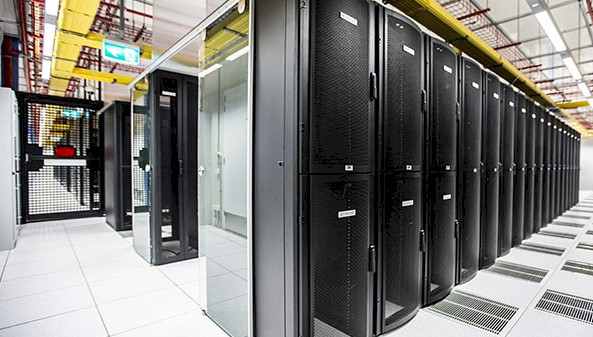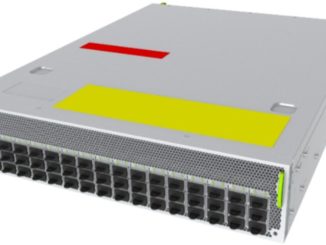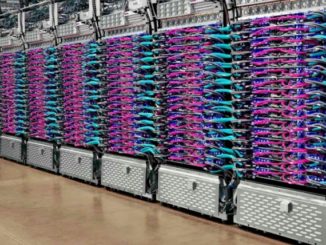
In the end, what enterprises really want is a way to run any application on any cloud at any time. And Equinix, which operates one of the largest networks of datacenters on the planet, is hoping to make that happen.
Over the past two decades, Equinix has steadily expanded the number of its facilities and its global reach to where it now has more than 200 facilities in more than 55 markets around the world. The company also has adapted to the rise of public clouds and other trends that are reshaping the IT industry. Key to this has been Platform Equinix, the mesh of datacenters created by interconnecting of all these datacenters – those owned by Equinix, the big clouds, and other service providers – together and by enabling enterprises to connect endpoints within datacenters and campuses via physical and virtual interconnections and integrate networks, cloud, and business services through direct interconnection and APIs.
Included in the platform are more than 9,800 companies, 1,800 network providers, 2,900 cloud services providers and more than 340,000 interconnections, according to Equinix. There also is the Equinix Cloud Exchange Fabric for connecting distributed infrastructure with datacenter-to-datacenter network connections via Platform Equinix, the Equinix Internet Exchange for enabling networks, content providers and enterprises to exchange Internet traffic and Equinix Metro Connect services for dedicated carrier-grade network links between customers in different Equinix International Business Exchange (IBX) datacenters.
The building of Platform Equinix has been done partly through an aggressive acquisition strategy. Synergy Research Group, which tracks the datacenter market, found that in 2019, the number of data center-based deals surpassed 100 for the first time, a 6 percent jump over 2018 and more than double the number of closed deals in 2016, though the aggregate value of the deals declined for the second year in a row.
Equinix has been among the most aggressive acquirers since 2015, including closing two of the three largest deals – Its $3.6 billion acquisition in 2017 of 29 Verizon datacenters and the $3.8 billion deal for European datacenter services firm Telecity the year before. However, as we have written about a lot here at The Next Platform, the edge is where a lot of the action is shifting. A more mobile workforce, the rise of the Internet of Things (IoT), the cloud, faster networking and modern workloads that leverage advanced technologies like artificial intelligence and analytics are helping to push data and applications out of core datacenters. This is driving demand for more compute, storage and other technologies out closer to where the applications are being accessed and data created.
Out To The Edge
That was a key driver behind Equinix’s $335 million purchase of bare-metal server startup Packet, a deal that was announced in January and closed earlier this month. Equinix runs big interconnected datacenters in set locations. With Packet, enterprises will be able to leverage the smaller company’s automated server and networking provisioning capabilities. The key to Packet is that it doesn’t use virtualization or multitenancy, which means customers can push single-tenant infrastructure out to the edge in a bare metal-as-a-service model. Because they’re using bare metal, enterprises can put whatever software and virtualization they want onto the system.
When Packet launched in 2014, it was becoming increasingly clear that mobility was going to be key when talking about software, according to Zachary Smith, former CEO of Packet and now managing director of Equinix’s bare metal business. The software innovation cycle was speeding up, containers and Kubernetes were beginning to ramp and the idea of the portable workload was gaining steam.
“We felt that there was going to be in some point in time the desire to move the application closer to the actual data, to where things are happening,” Smith tells The Next Platform, adding that developer used to running platform were going to want to push their applications closer to the devices. “Our concept was that instead of having these very big, very opinionated platforms on which to run that workload, we’re going to have to get more fundamental, which is why we focused on automating single-tenant, bare-metal compute hardware, the lowest common denominator that we could get to allow developers to deploy and manage the application no matter where it was.”
The key is the software, Smith says. It used to be easier to be in a single availability zone than 50, but now it’s getting easier to create applications and deploy them in a serverless function in 20 countries. Combine the idea of more mobile software, the upcoming ramp of 5G networking – faster, more bandwidth and more capacity than 4G and LTE – and the rapid trend toward wireless, and the rush to the edge will accelerate.
“What’s happening with this next rollout of network infrastructure around 5G is you’ve already had disaggregation,” he says. “Instead of buying the big magic box, you’re buying computers and software to run your wireless network. What does that look like? It looks like an app. So now suddenly people are saying, ‘Hey, what if this infrastructure was more consumable? What could we share?’ It’s like the tower we shared with five carriers or maybe the computer, which you could share with 20 or 40 people who wanted to run an edge workload here. That cost of shared infrastructure – you could have infrastructure without having to build it all – is becoming more interesting around that push for 5G infrastructure.”
Packet began its push to the edge by enabling developers to connect to bare-metal computers that were a few locations.
“Once we kind of got that traction and the cloud-native movement reinforced that, then we started with our edge model and said, ‘OK, where do you want it to go?’ Instead of saying, ‘Here’s the things I have in these couple of places,’ it was, ‘Where do you want to be?’” Smith says. “Everybody we talked to that had an edge application had a different understanding of what the edge meant to them. Some said, ‘The edge is Boston’ and someone else said, ‘No, the edge is this street corner in Boston.’ What we realized is we couldn’t ever be right in our placement, so we developed our edge model, which was a go-anywhere model. We partnered with different forms of real estate in terms of tower companies and datacenter businesses and retail and said, ‘Hey, can we put our compute with you?’”
The company then started commercializing the effort, with Sprint becoming its first real edge customer. Packet built Sprint’s Curiosity Internet of Things (IoT) network, which enabled people to run applications wherever they wanted, he says. Then Packet began take steps to reduce the size of the infrastructure. It shrunk the control plane so that a bare-metal availability zone could fit into two racks.
“How could we get a smaller, more fungible, easier-to-turn-up availability zone?” Smith says. “We can turn up new AZs in about two weeks. Making that easier and more efficient for us to do. Now it’s maturing. With Sprint, we’re starting to see SaaS [software-as-a-service] companies want to be next to that. They’re calling us and saying ‘Hey, we want to be at the edge of Sprint’s network. Can you add more capacity to that location in Detroit or those locations in Pittsburgh?’” he says. “The market is evolving with it, and the applications are beginning to show up with it, beyond the network. The network was the first application. The next ones are the developers.”
A key for Packet has been to stay true to what it is. It’s an infrastructure company that can automate bare-metal compute anywhere, he says. Packet needed to build an ecosystem, which included issue a State of the Edge report, which brought on about 100 companies to help define the architecture. The company also hosted a “Wireless Test Kitchen” last year to bring in different kinds of spectrum. The goal is to enable an ecosystem that can benefit its infrastructure. It’s also why Packet is a good fit with Equinix, Smith says.
Equinix At The Edge
Packet becomes the tip of the spear for Equinix’s edge strategy. Smith notes that Equinix has developed some edge services to make it easier for enterprises to leverage its platform of datacenters in preferred locations. It can be done, but it’s not easy because it requires bi-colocation, he says.
“We feel the best approach possible – and this is why the alignment with Equinix is so strong – is to stay very fundamental,” he says. “They’re not going to get into the cloud business. It’s not their job. In fact, they partner with the cloud providers like Amazon Web Services, Google Cloud, IBM Cloud and Microsoft Azure. They’re not into the software business. They’re not in the VM business.”
As the edge evolves, it will be the developers and the apps they create that will drive it. Smith says his goal is to have Packet – and now Equinix – make it possible for software companies to access and innovate on infrastructure at the edge in hundreds of places around the world.
“We unfortunately don’t invent the future,” Smith says. “It’s our job to be the plumbers, to help that move faster. We’ve got this massive wave of developers and enterprises who are innovating and they’re going to invent the future. They’re going to create he next things. My hope is we get to be there to support that.”





Be the first to comment